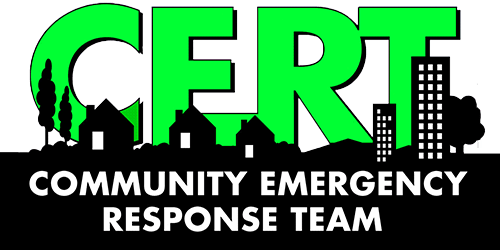 Community Emergency Response Team (CERT)
Community Emergency Response Team (CERT)

 Community Emergency Response Team (CERT)
Community Emergency Response Team (CERT)

| Link | Notes | |
|---|---|---|
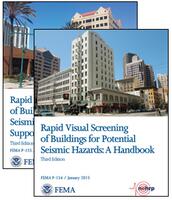 |
FEMA Rapid Visual Screening page | The Rapid Visual Screening (RVS) handbook can be used by trained personnel to identify, inventory, and screen buildings that are potentially seismically vulnerable. The RVS procedure comprises a method and several forms that help users to quickly identify, inventory, and score buildings according to their risk of collapse if hit by major earthquakes. The RVS handbook describes how to identify the structural type and key weakness characteristics, how to complete the screening forms, and how to manage a successful RVS program. |
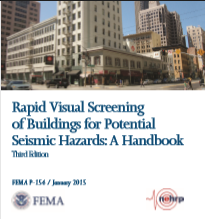 |
FEMA-154 | The third edition of the Handbook (FEMA P-154) includes extensive updates, including improvements in the methodology, the screening forms, and the underlying scoring; the addition of a more detailed professional screening option (level 2 screening); new quick reference guides with extensive figures illustrating important building characteristics; an electronic scoring option; and guidance on how to administer an effective screening program. The FEMA P-154 CD contains PowerPoint slides with instructor notes; the RVS Student Manual (FEMA 154SM); data collection forms; and PDF and text file versions of FEMA P-154 (both FEMA P-154 and FEMA P-155 include the FEMA P-154 CD). |
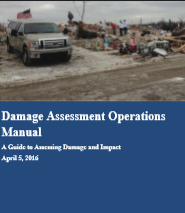 |
FEMA Damage Assessment page | The FEMA Damage Assessment Operations Manual is part of a greater effort to provide a user-friendly, streamlined post-disaster damage assessment process that builds on the existing knowledge and expertise of State or Tribe and local partners to identify damage after a natural or man-made disaster. Eligible Tribes and U.S. territories are considered the same as States for application of FEMA programs; the Manual is aimed at clarifying FEMA damage assessment guidance, promoting standardized information collection, and assisting in the development of requests for federal disaster assistance. |
 |
Damage Assessment Operations Manual |
The FEMA Damage Assessment Operations Manual is intended to expedite decision-making and the delivery of assistance by defining national standards for assessing damage and clearly outlining the information considered when evaluating requests for a Major Disaster Declaration. To support this overall objective, this manual aims to achieve three major goals:
|
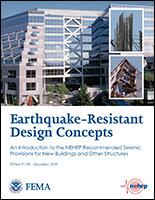 |
Earthquake-Resistant Design Concepts: An Introduction to the NEHRP Recommended Seismic Provisions for New Buildings and Other Structures | One of the goals of the National Earthquake Hazards Reduction Program (NEHRP) is to encourage design and construction practices that address the earthquake hazard and minimize the resulting risk to life and property. The publication of FEMA P-749, a companion guide to the 2009 edition of the NEHRP Recommended Seismic Provisions for New Buildings and Other Structures (FEMA P-750), reaffirms FEMA’s ongoing commitment to achieving this goal. Understanding the basis for the seismic regulations in the nation’s building codes and standards is important to those outside the technical community including elected officials, decision-makers in the insurance and financial communities, and individual building or business owners and other concerned citizens. This document is intended to provide these interested individuals with a readily understandable explanation of the intent and requirements of seismic design in general and the Provisions in particular. |
 |
Homebuilders' Guide to Earthquake-Resistant Design and Construction (2006) | This guide replaces the Home Builder's Guide to Seismic Resistant Construction and all earlier versions of FEMA 232. It presents seismic design and construction guidance for one- and two-family light frame residential structures that can be utilized by homebuilders, homeowners, and other non-engineers, and provides supplemental information to the 2003 edition of the International Residential Code. Includes background information on the principles of seismic resistance and how earthquake forces impact conventional residential construction and more detailed information on architectural considerations. Discussions of masonry and stone elements, examples of typical floor plans for earthquake resistant one- and two-story homes, excerpts of seismic requirements from building codes, and checklists for home builders are included. The guide also presents a series of "above code recommendations" and low cost measures that would increase the performance of the building and help keep it functional after an earthquake. |
 |
My Plan | |
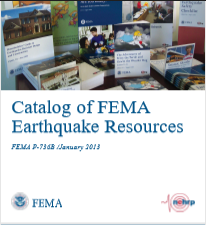 |
Catalog of FEMA Earthquake Resources | |
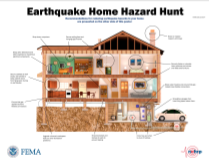 |
Earthquake Home Hazard Hunt | Recommendations for reducing earthquake hazards in your home are presented on the other side of this poster. |
 |
The Adventures of Terry the Turtle and Gracie the Wonder Dog | |
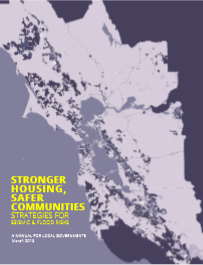 |
Stronger Housing, Safer Communities. Strategies for Seismic & Flood Risks (ABAG) | This manual was written to make the strategies developed for ABAG and BCDC’s Housing and Community Multiple Hazard Risk Assessment Project accessible and usable for local jurisdictions throughout the Bay Area. It is a resource to support action at multiple levels to address seismic and flooding vulnerabilities in the Bay Area. While we continue to learn about risks in the Bay Area, we know actions that can happen now to help the region become more resilient in the face of earthquakes and flooding. |
 |
Earthquake Home Safety Quiz (ABAG) | Do you know how safe your home will be in an earthquake? |
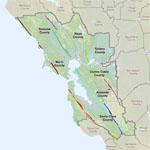 |
ABAG Fault Zone Maps | The California Geological Survey publishes maps of the active faults in the Bay Area that reach the surface as part of its work to implement the requirements of the Alquist-Priolo Earthquake Fault Zone Act. These maps show not only the most comprehensive depiction of fault traces that can rupture the surface but also the zones in which cities and counties must require special geologic studies to prevent the building of structures intended for human occupancy and in which the surface rupture hazard must be disclosed in real estate transactions. |
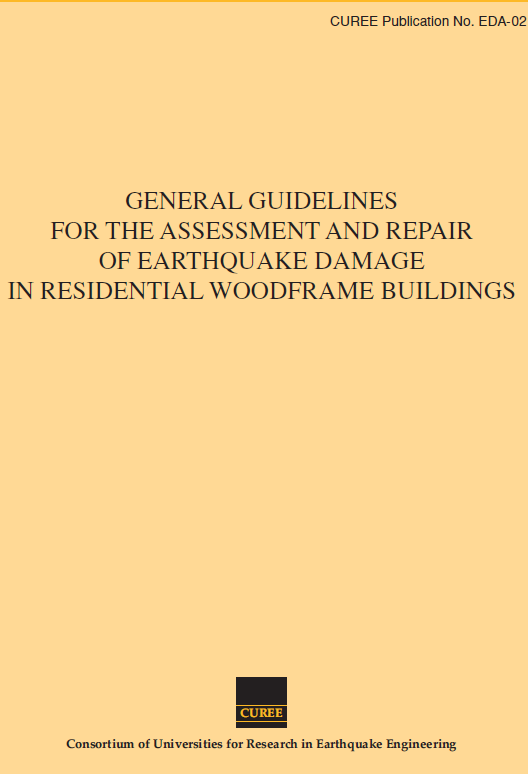 |
General Guidelines for the Assessment and Repair of Earthquake Damage in Residential Woodframe Buildings | These Guidelines summarize the process and details of assessment and repair of common types of earthquake damage in typical residential woodframe buildings. The objectives are to provide owners, contractors, insurance claim representatives (adjusters), and others with a basic understanding of earthquake effects on buildings. |